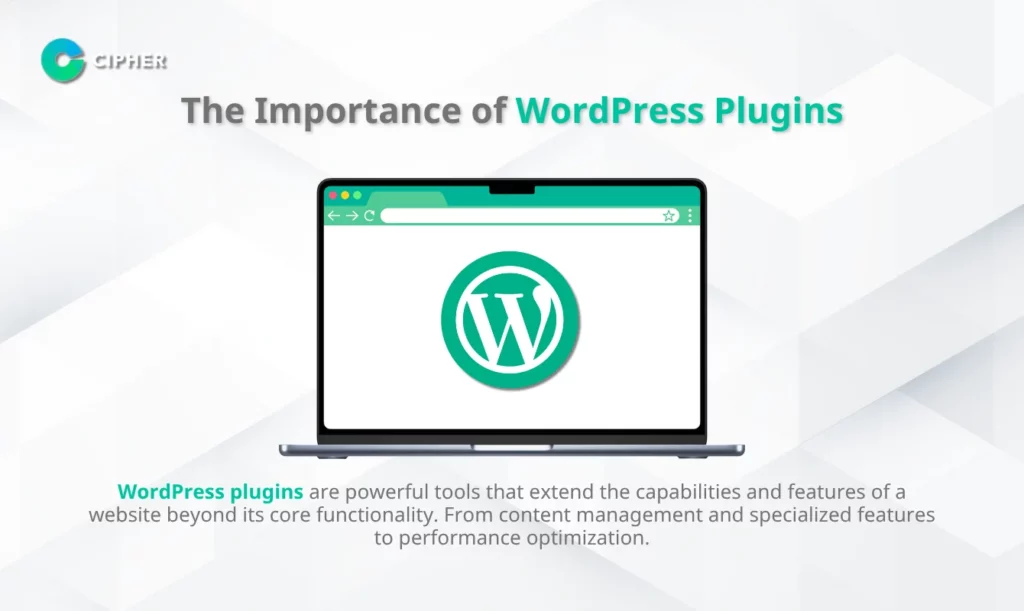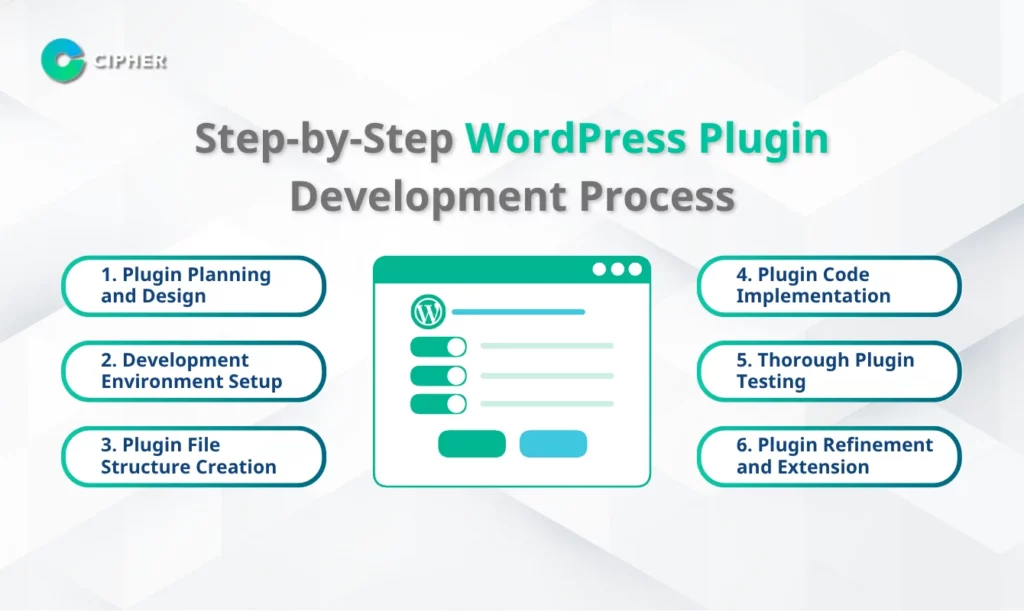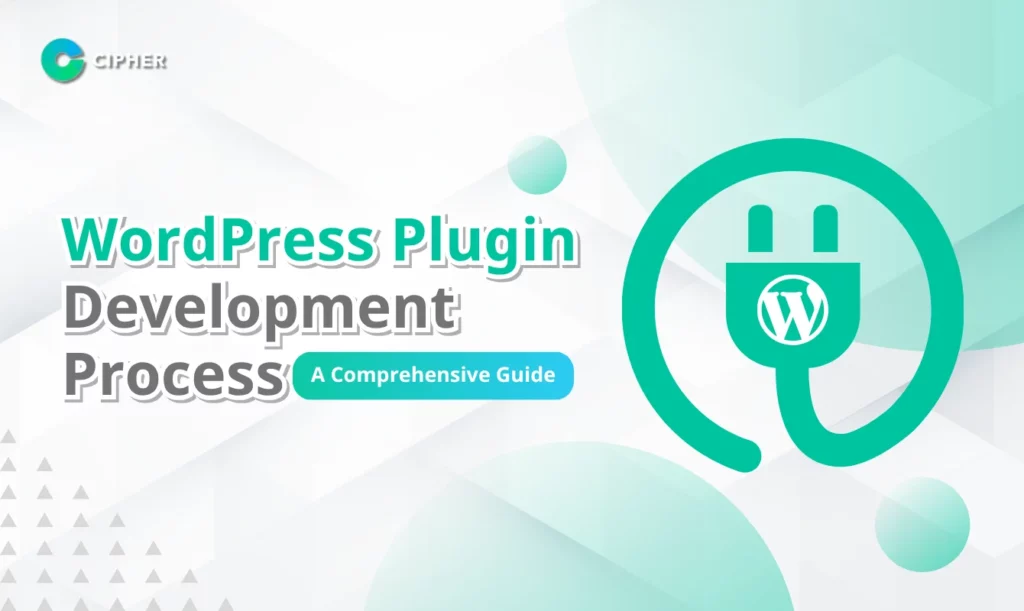Table of Contents
The WordPress plugin development process is a crucial aspect that WordPress developers, agencies, and plugin creators must grasp. As experts who WordPress develop plugin solutions for clients worldwide, Cipher understands the significance of plugins in enhancing WordPress websites. Our team specializes in custom WordPress plugin development and WordPress SEO to ensure optimal performance and functionality for your site.
The Importance of WordPress Plugins

Advantages of Custom WordPress Plugin Development
Developing WordPress plugins offers several key benefits:
- Tailored Functionality: Create plugins that precisely meet your website’s unique requirements.
- Enhanced Control: Easily manage and resolve issues within the plugin.
- Innovation: Develop innovative features not available in existing plugins.
- Monetization Opportunities: Generate revenue by selling or offering the plugin for download.
Essential Skills for WordPress Plugin Development
PHP Proficiency
HTML and CSS Knowledge
JavaScript Skills
WordPress Core Understanding
Step-by-Step WordPress Plugin Development Process

1. Plugin Planning and Design
2. Development Environment Setup
3. Plugin File Structure Creation
- Create a dedicated folder for the plugin in the wp-content/plugins/ directory.
- Create a main PHP file with the same name as the folder.
- Include an empty index.php file to prevent direct access to plugin files.
- Add plugin header information in the main PHP file (name, description, author, version).
4. Plugin Code Implementation
Begin coding the plugin in the main PHP file according to the designed features:
- Implement activation and deactivation functions to handle plugin initialization.
- Create shortcodes for accessing plugin features through content.
- Utilize action hooks or filters to inject code or modify output.
- Design the user interface using HTML, CSS, and JavaScript.
- Develop the core functionalities of the plugin as planned.
5. Thorough Plugin Testing
After completing each development phase, thoroughly test the plugin:
- Install and activate the plugin on a test WordPress site.
- Test functionality using shortcodes or settings pages.
- Validate error handling by inputting incorrect or missing data.
- Execute test cases to verify accuracy and identify bugs.
- Assess front-end rendering and database interactions.
- Iteratively refine and fix issues until no errors are detected.
6. Plugin Refinement and Extension
WordPress plugins development goes beyond basic functionality. Consider the following enhancements:
- Optimize code readability, organization, and documentation.
- Improve the user interface for better usability and visual appeal.
- Offer diverse configuration options for permissions and parameters.
- Develop additional features based on user feedback and requirements.
Plugin Deployment and Usage
Preparing Plugin Files for Distribution
To distribute the plugin in marketplaces or for others to use, prepare the following:
- Compress all files in the plugin folder into a .zip archive.
- Write a readme file (plain text or markdown) explaining usage, settings, troubleshooting, and a changelog.
- Create cover images and screenshots showcasing the plugin’s functionality.
- Specify the license, pricing, and terms of use.
Plugin Installation and Activation
To install the plugin on a WordPress site, follow these steps:
- Navigate to the Plugins menu.
- Click “Add New.”
- Choose “Upload Plugin” and select the prepared .zip file.
- Click “Install” and wait for the process to complete.
- Click “Activate” to enable the plugin.
- Configure additional settings in the plugin’s menu.
Alternatively, install via FTP by uploading the plugin folder directly to wp-content/plugins/ and activating it from the Plugins menu.
Utilizing the Plugin on Your Website
Plugin usage varies based on its specific functionality. Common methods include:
- Inserting shortcodes into pages or posts where desired.
- Accessing features directly through the plugin’s dedicated menu.
- Configuring automatic functions in the plugin’s settings.
- Integrating with other systems or plugins using the plugin’s API.
Consult the plugin’s documentation or reach out to the developer for detailed usage instructions.
Streamline Your WordPress Plugin Development Process with Cipher
Conclusion
The WordPress plugin development process is a critical aspect of creating a powerful and feature-rich website. By understanding the importance of plugins, acquiring the necessary skills, and following a systematic development approach, you can unlock the full potential of your WordPress site. Cipher, a leading WordPress build plugin company, offers comprehensive plugin development services and WordPress SEO to help you streamline the process and achieve your online goals. Partner with Cipher today to leverage our expertise and take your website to the next level with custom-built, high-performance WordPress plugins.
Frequently Asked Questions
What are the primary functions of WordPress plugins?
Which WordPress plugins are essential?
Essential WordPress plugins typically fall into categories that improve website performance and functionality. Recommended plugins include:
- SEO plugins: Yoast SEO, RankMath
- Caching and speed optimization plugins: WP Rocket, W3 Total Cache
- Anti-spam plugins: Akismet, Antispam Bee
- Backup plugins: UpdraftPlus, BackupBuddy
- User and team management plugins: User Role Editor, PublishPress
- Essential feature plugins: WPForms, WooCommerce, bbPress
How can WordPress plugins be installed?
There are three primary methods to install WordPress plugins:
- Through the WordPress Admin Plugin menu by searching for the plugin by name or keyword and clicking “Install.”
- Uploading the plugin’s .zip file via the “Upload Plugin” option in the Plugin menu.
- Uploading the plugin files directly to the wp-content/plugins/ directory via FTP and activating the plugin from the Plugin menu.
What are the benefits of using WordPress plugins?
The key benefits of installing WordPress plugins include:
- Extending website functionality: Add features like e-commerce, blog management, and galleries.
- Improving search engine rankings: Optimize your site for search engines using SEO plugins.
- Enhancing website security: Protect your site from spam, viruses, and attacks to a certain extent.
- Saving development time: Avoid writing code for every desired feature by using pre-built plugins.
- Reducing development costs: Utilize the vast array of free plugins available for WordPress.





